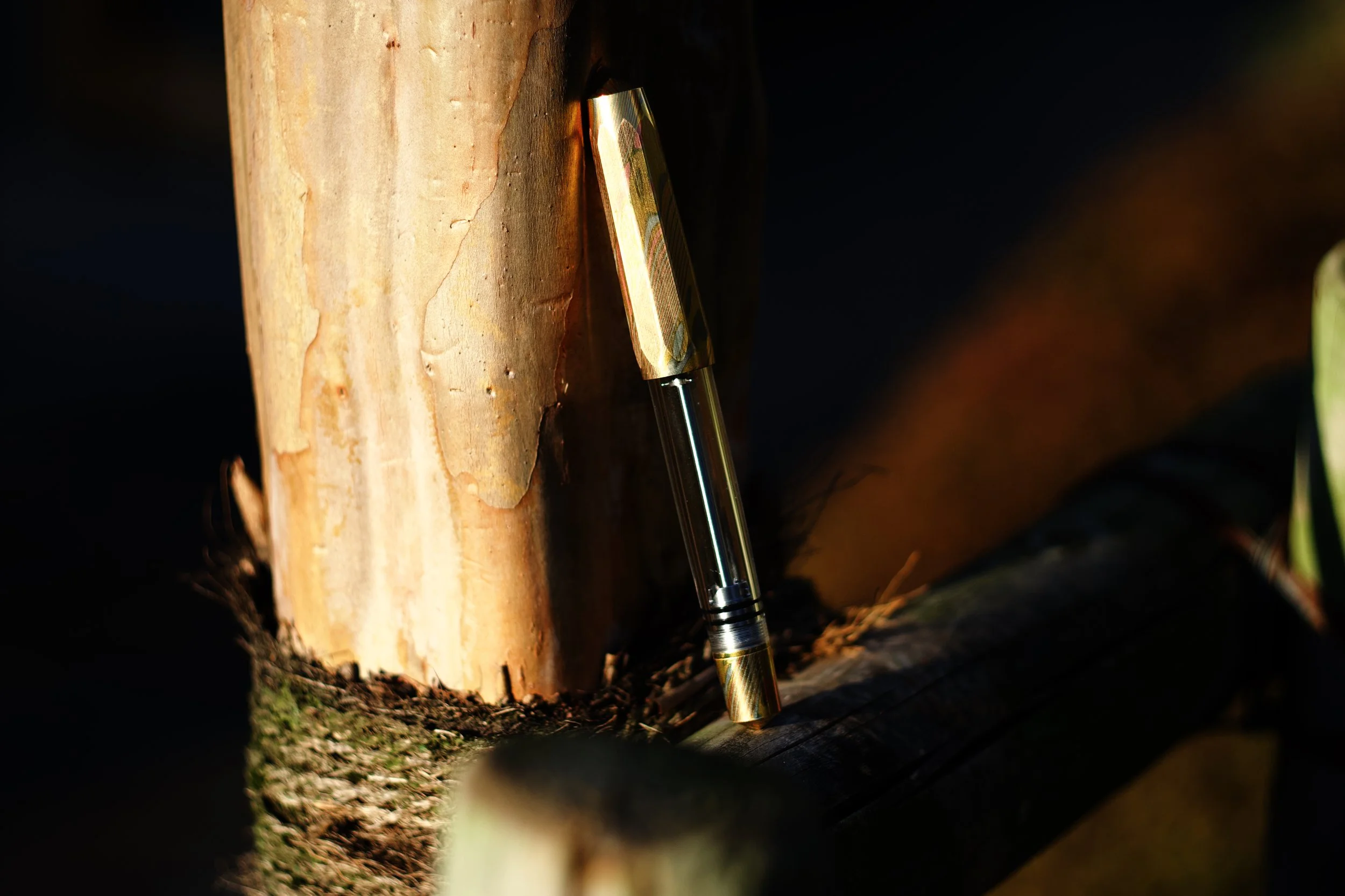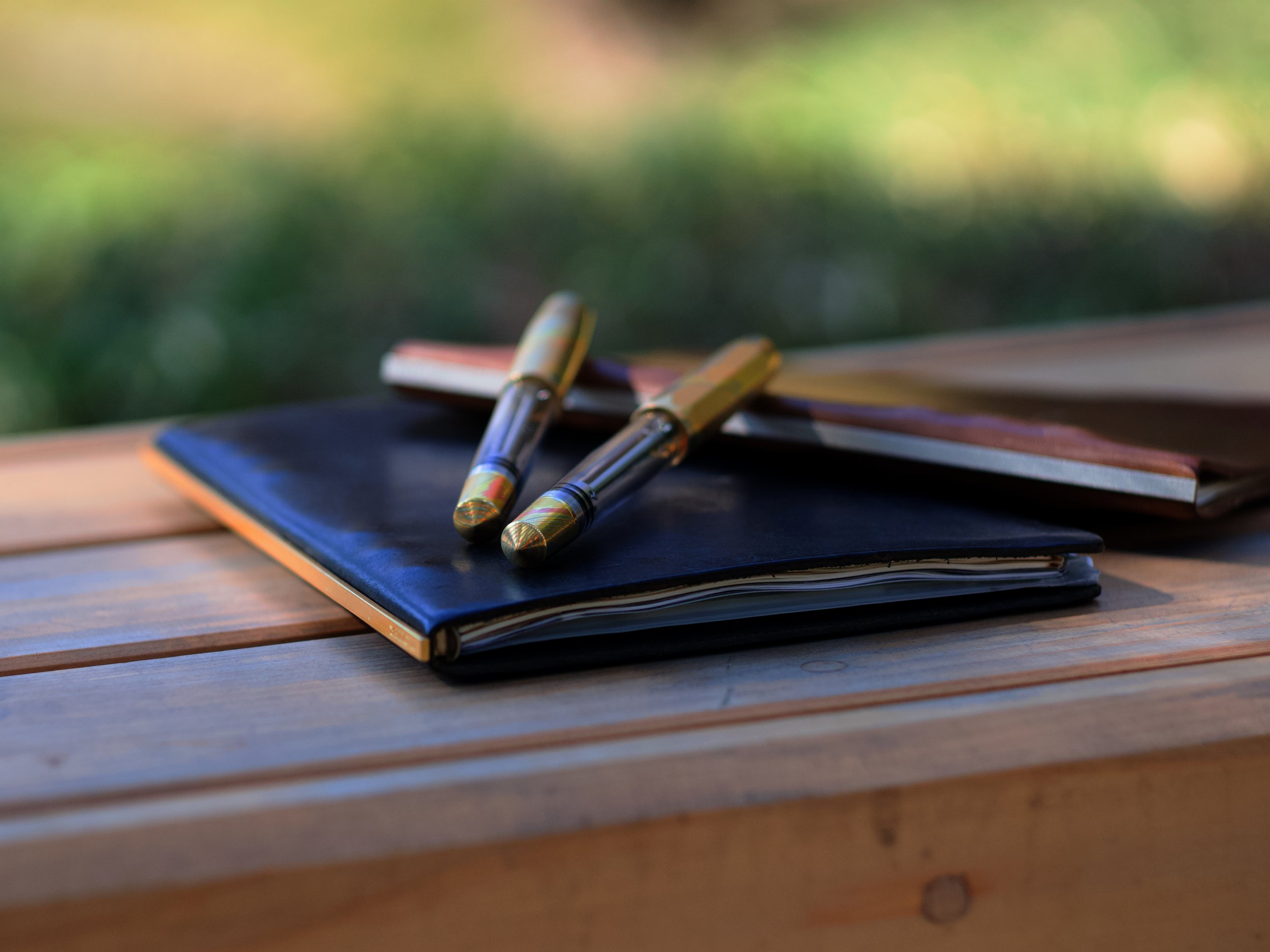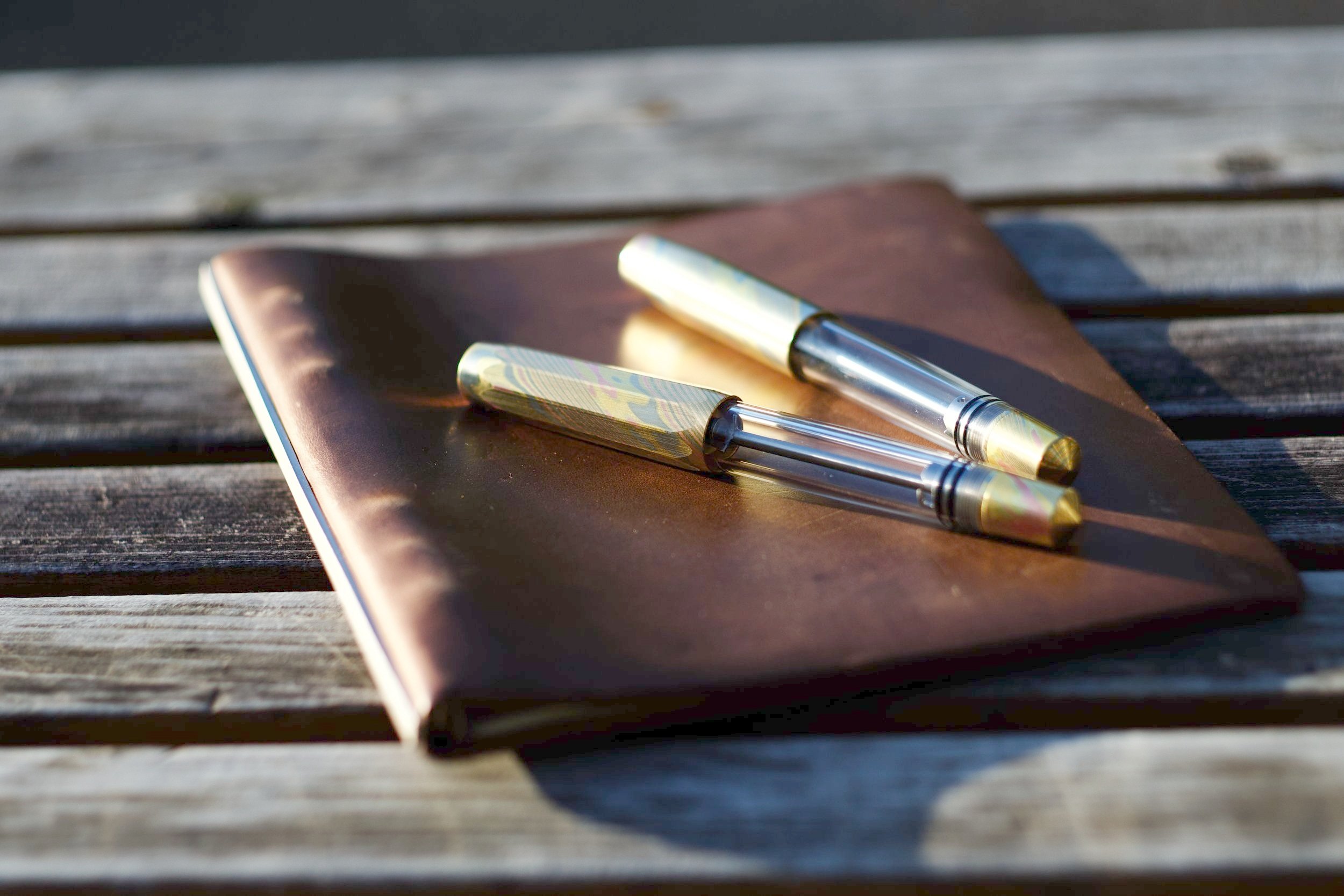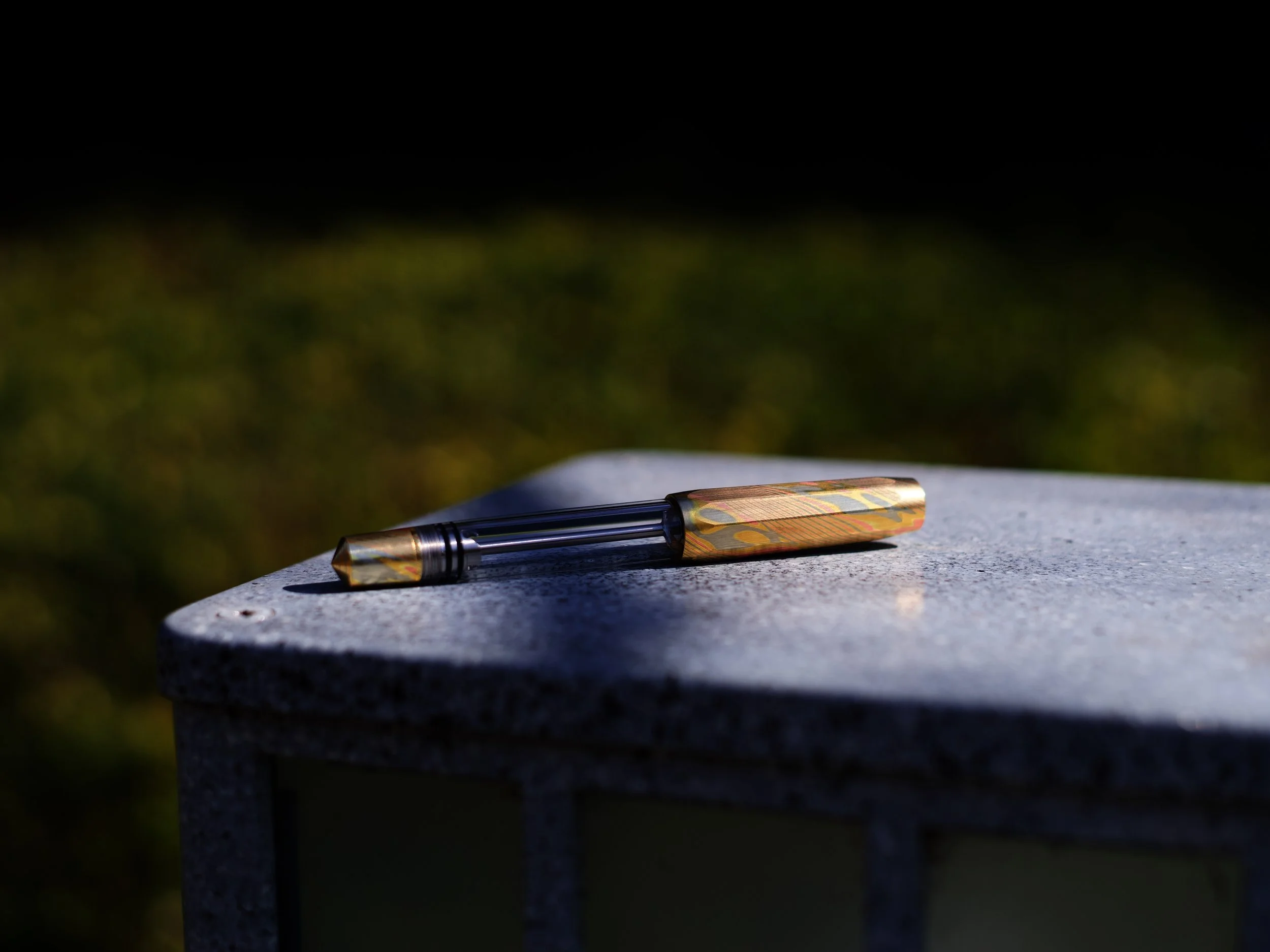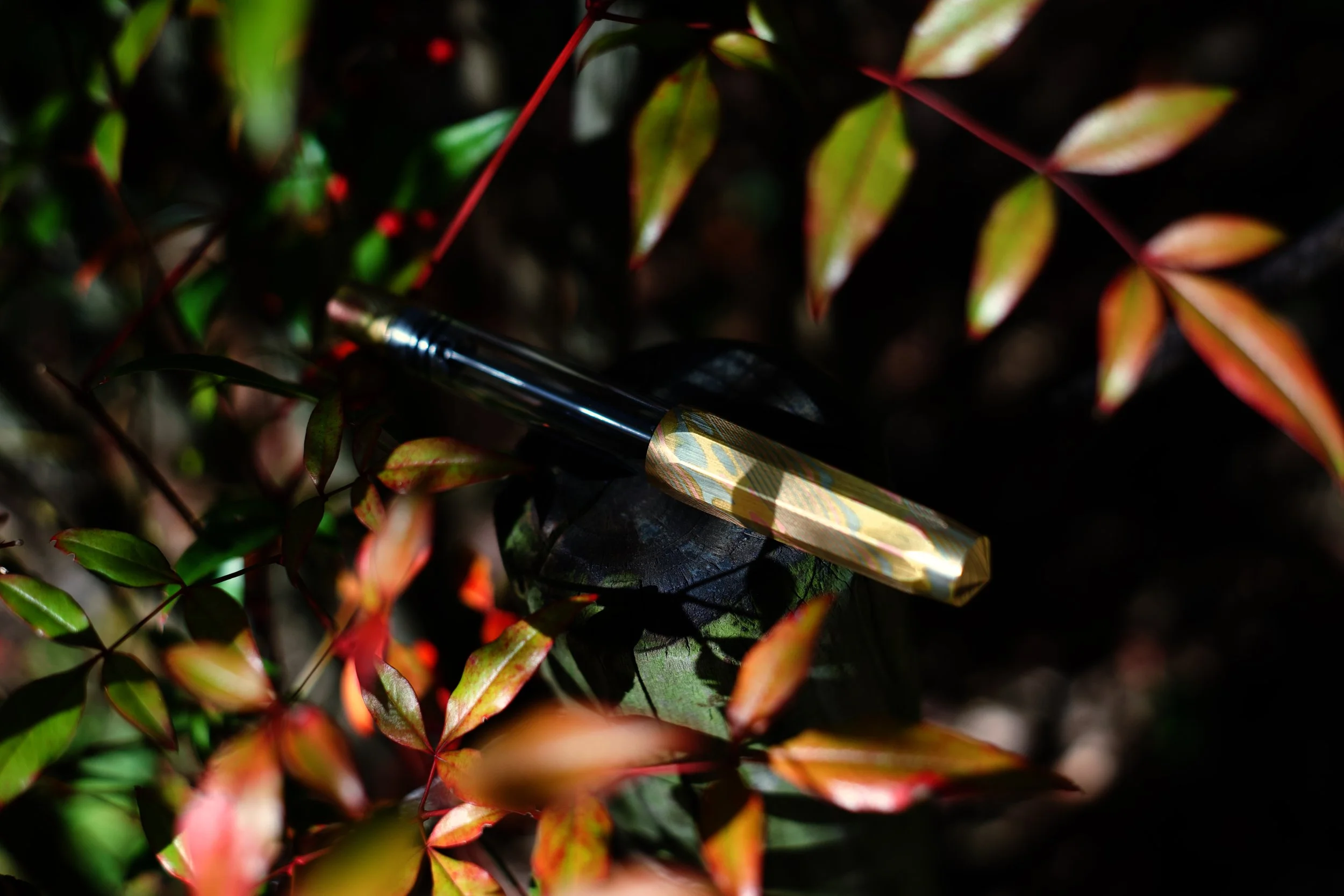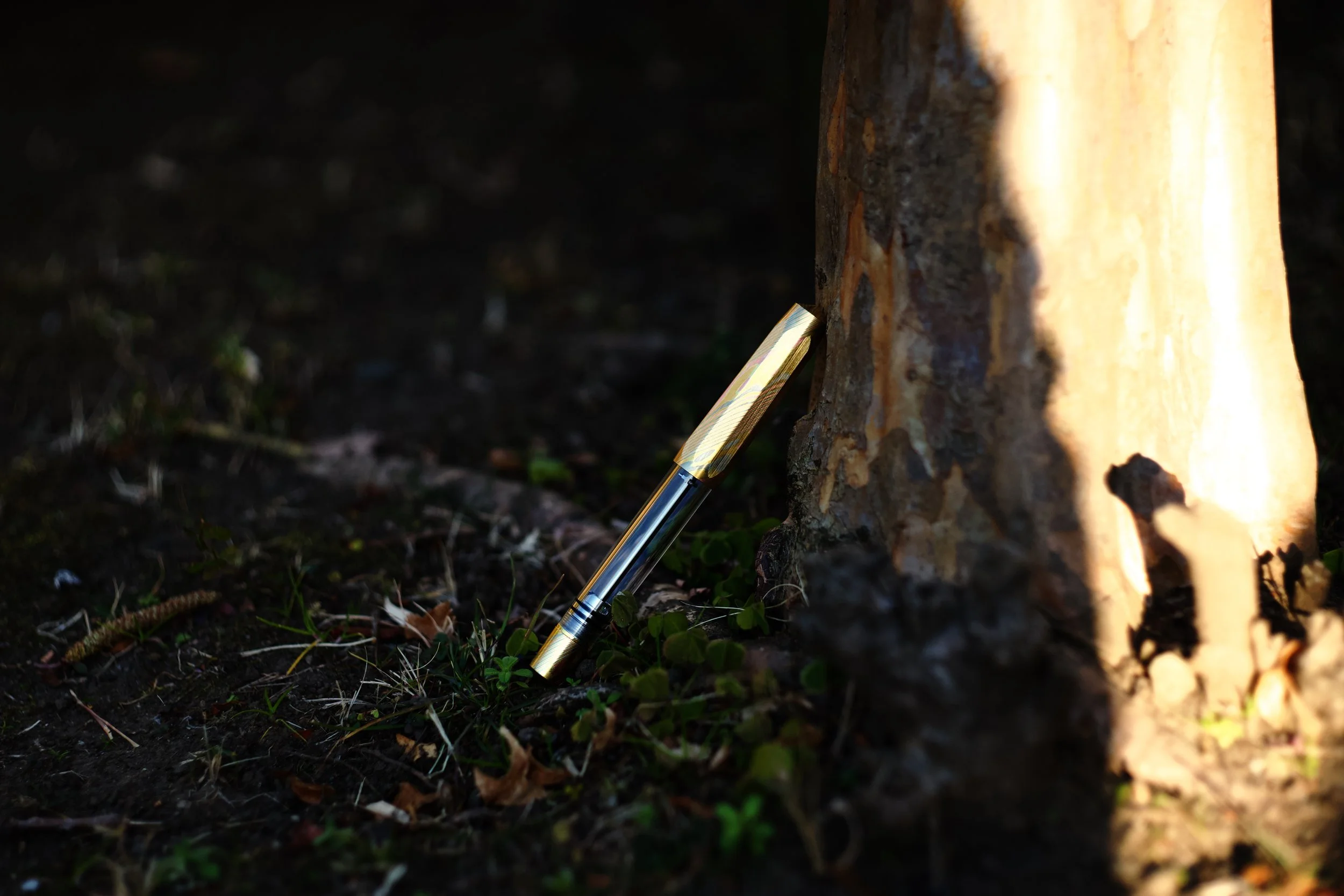about Mokume-gane
Traditionally, Mokume-gane has been used in ceremonial objects such as sword hilts, vases, and even early types of portable writing instruments called Yatate. Today, Mokume-gane is most often used in jewelry, especially wedding bands, in Japan. It is particularly favoured for the unique patina that it can take as each metal will patina at a different rate and into a different color and look.
Our Mokume-gane pens use brass, copper, and cupronickel to give a unique woodgrain pattern, and are finished with a machine brushed texture. This material is not something that can simply be melted into a workable piece of metal. Instead, a difficult and arduous solid state diffusion bonding is used to laminate the various different metals together under heat and pressure. Each metal has a different hardness and will wear and patina differently to each other, which will create a unique tactile material through time.
-
Capped Weight: 72.3g
Uncapped Weight: 40.8g
Ink Capacity: 3.5ml ~ 4.2ml
Section Diameter: 10.6mm ~ 11.9mm
Pen Barrel Diameter: 12.6mm ~ 14mm -
The Pump Piston filler is a high capacity filling mechanism that is powered by a piston unit activated along a piston rod. The rod attaches to the piston unit via three spokes easily and freely. Once the piston rod is secure in the J-lock on the piston unit, the piston unit can be detached from the piston connector at the back of the pen by turning the piston knob counter-clockwise and be pushed towards the section, which expels the air in the barrel.
For more information visit our page with video instructions here.
-
We recommend the use of dye based fountain pen inks only. Use of pigmented inks or iron gall inks may leave visible residue inside the clear barrel that cannot be removed.
Please place your pens on a pen tray or a pen rest when not in use at a desk. While the materials used in the Kyuseido Kakari and the Kyuseido Kosumi lines are of the highest quality, vertical impact may cause damage to the pen. Repairs are possible but will carry a repair fee.
Please do NOT attempt to self-repair. Always contact your Authorized Retailer first if you are having issues with your Pump Piston Filler.




